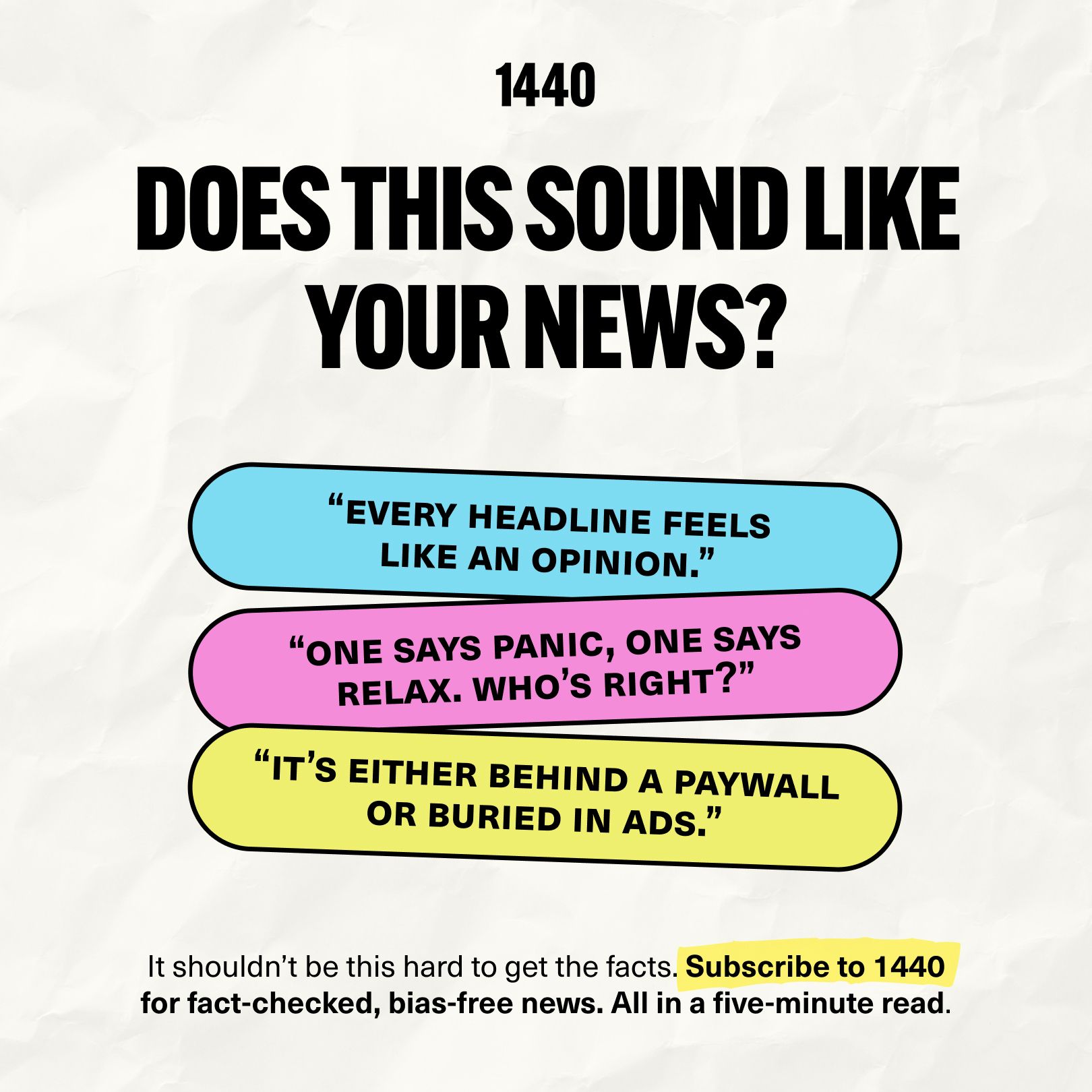Looking for unbiased, fact-based news? Join 1440 today.
Join over 4 million Americans who start their day with 1440 – your daily digest for unbiased, fact-centric news. From politics to sports, we cover it all by analyzing over 100 sources. Our concise, 5-minute read lands in your inbox each morning at no cost. Experience news without the noise; let 1440 help you make up your own mind. Sign up now and invite your friends and family to be part of the informed.
Hi!
Welcome back to AIMedily.
Last Friday, I sent you an email with a survey.
I asked about your favorite sections, how many summaries you prefer, and if it’s easy to read.
I want you to know that AIMedily is written for you. The more you tell me what you like, the better.
I’ve been working on something interesting. Next week I’ll share more about it.
Now, let’s dive into today’s newsletter:
.🤖AIBytes: AI Detects Falls Without Cameras. AI Detects Falls Without Cameras. Can teaching physicians how to use GPT-o4 improve diagnosis? Brain Computer Interface + Robotic Glove in Stroke.
🦾TechTools: A virtual reality tool that uses AI for personalized care. A software that allows you to build your digital twin right from your smartphone. An LLM search engine that delivers evidence-based medical answers.
🧬AI Medily Snaps: ChatGPT as a learning tool, more on digital twins, and coming conferences.
🧩TriviaRX: Test your knowledge.
🤖 AIBytes
Researchers developed a new AI system that uses WiFi signals to estimate body posture and detect falls—no cameras required.
🔬 Methods
Study design: AI model development and validation.
AI pipeline:
TED-Net (Transformer-based Encoder-Decoder): Estimates body pose from WiFi.
DGNN (Directed Graph Neural Network): Recognizes actions - based on estimated poses.
Datasets used:
Public multimodal dataset (WiFi, video, motion capture) for pose estimation.
New dataset of fall-related activities from 20 participants.
Assessments:
Pose accuracy compared to video recording.
Detection of both fall and non-fall movements.
📊 Results
TED-Net precisely estimated human poses from WiFi signals.
DGNN accurately classified actions using the generated skeletons.
The system sustained high accuracy across both fall and non-fall scenarios
🔑 Key Takeaways
WiFi signals can track movement and detect falls without cameras.
Fall detection performance was comparable to a camera.
Demonstrated strong potential for non-invasive, privacy-safe monitoring.
Check 👉 this video to watch how it works (minute 57).
🔗 Cho Y, Motta E, Nocentini O, et al. WiFi based Human Fall and Activity Recognition using Transformer based Encoder Decoder and Graph Neural Networks. arXiv. April 2025. https://doi.org/10.48550/arXiv.2504.16655
This study tested whether AI-literacy training could help physicians collaborate effectively with LLMs.
Especially in resource-limited settings.
🔬 Methods
Design: Single-blind randomized controlled trial.
Participants: 58 licensed physicians.
They completed a 20-hour AI-literacy curriculum that covered:
The capabilities, limitations, prompt design of LLMs, and an analysis of how accurate the responses were.
Assessment:
Physicians evaluated up to 6 clinical vignettes in 75 minutes.
Blind reviewers scored diagnostic reasoning.
📊 Results
Diagnostic reasoning scores:
LLM + trained physicians: 71.5%
Control: 42.5%
Statistically significant (P < .001)
Final diagnosis accuracy: LLM group outperformed control by 34.4 points.
Time per case: Similar between groups (~10 minutes)
🔑 Key Takeaways
AI-literate physicians significantly outperformed peers using conventional tools alone.
GPT-4o improved diagnostic accuracy when paired with trained clinicians.
It was more helpful to less experienced physicians and those with limited prior LLM use.
AI- literacy training can enable physicians in resource-limited settings to improve diagnostic.
🔗 Qazi IA, Ali A, Khawaja AU, et al. AI-literacy training enhances physician-LLM diagnostic collaboration in a resource-limited setting: a randomized controlled trial. medRxiv. Published July 21, 2025. doi:10.1101/2025.06.06.25329104
The authors compared a soft robotic glove controlled by a brain–computer interface (BCI) vs a robotic glove alone - to improve upper-limb function in subacute stroke patients.
They also explored brain activation patterns using Functional Near-Infrared Spectroscopy (fNIRS), which provides non-invasive monitoring of brain activity through changes in blood oxygenation levels.
🔬 Methods
Study design: Randomized controlled trial.
Participants: 39 patients with subacute stroke and left hemiparesis.
Intervention:
BCI-controlled soft robotic glove group (BCI-SRG; n = 20)
Robotic glove alone (SRG; n ≈ 19)
Rehabilitation: Both groups completed 20 sessions over 4 weeks + conventional rehab.
Assessments before and after treatment:
Imaging: Brain activity monitored using functional near-infrared spectroscopy before and after training.
Check the image here.
📊 Results
Motor outcomes significantly improved in the BCI-SRG group:
Action Research Arm Test: P = .032
FMA-UL: P = .010
MBI: No significant change (P = .065)
fNIRS data showed increased oxygen levels in the:
Bilateral sensorimotor cortex
Medial prefrontal cortex
Correlations between brain activity and motor recovery:
Left dorsolateral prefrontal cortex P = .012
Right dorsolateral prefrontal cortex P = .003
🔑 Key Takeaways
BCI + robotic glove significantly enhances upper limb functional recovery.
The combination facilitates bilateral motor and sensory cortical reorganization.
Prefrontal cortex brain activation is correlated with functional improvements.
🔗 Ji X, Lu X, Xu Y, et al. Effects and neural mechanisms of a brain–computer interface-controlled soft robotic glove on upper limb function in patients with subacute stroke: a randomized controlled fNIRS study. J NeuroEngineering Rehabil. 2025;22:171. https://doi.org/10.1186/s12984-025-01704-x
🦾TechTools
Check this week's TechTools, they are super interesting.
A Virtual Reality portable tool that has 400+ exercises in 7 modalities for personalized care.
It can be used remotely and monitor progress with 3D tracking in real time and provide reports.
Uses AI to adapt exercises in real time based on each patient’s needs.
MyoLab is developing MyoSapiens, an AI system that builds personalized digital twins.
Predicts each user’s physiology to deliver hyper-personalized support for health, performance, and daily life.
Runs interactively through internet-streamed data on everyday smartphones.
🧬AIMedily Snaps
ChatGPT as a Learning Tool for Medical Students: Results From a Randomized Controlled Trial (Link).
The use of digital twins in medicine: It will transform how we develop, test, and deliver healthcare solutions (Link).
3rd Global Conference on Physical Medicine and Rehabilitation, September 15-17, 2025. London, UK (Link).
16th Congress of the Mediterranean Forum of Physical and Rehabilitation Medicine. September 18-21, 2025. Šibenik, Croatia (Link).
🧩TriviaRX
Which Roman physician prescribed exercise therapy for hemiplegia over 1,800 years ago?
A) Hippocrates
B) Galen
C) Celsus
D) Soranus
👉Now, the answer from last Trivia!🥁
✅ D) Use of scalp EEG for cursor control
In the late 1960s, Dr. Jacques Vidal at UCLA pioneered the use of scalp-recorded electroencephalography (EEG) to control external devices, marking the birth of clinical Brain Computer Interfaces.
🔗Vidal JJ. Toward direct brain-computer communication. 1973;2(1):157–180.
That’s all.
As always, thank you for being here.
If you have suggestions, please reply to this email. I promise I will read your email.
Help me share AIMedily with your colleagues 🙂. To do it, you can:
💌Forward this email
📲Share this link on your phone.
Until next Wednesday!
Itzel Fer, MD PM&R
Join my Newsletter 👉 AIMedily.com
Forwarded this email? Sign up here
How did you like today's newsletter?
Start learning AI in 2025
Keeping up with AI is hard – we get it!
That’s why over 1M professionals read Superhuman AI to stay ahead.
Get daily AI news, tools, and tutorials
Learn new AI skills you can use at work in 3 mins a day
Become 10X more productive









